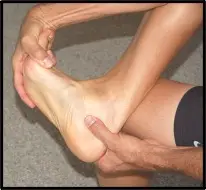Medications and medical treatments are providing lifesaving assistance to asthma sufferers, but what else can you do to help manage your condition? Understanding asthma and implementing self-help strategies can significantly enhance your control over it.
Understanding Asthma
Asthma is an obstructive lung condition, meaning the airways are narrowed, making it harder to breathe. Gaining control over your breathing can help reduce panic and stress associated with impaired breathing.
The Importance of Effective Breathing
Our lungs are larger at the bottom and smaller at the top, which means there is better blood flow and oxygen exchange at the base. To maximize oxygen intake, it’s crucial to direct air to the base of your lungs. Shallow breathing wastes effort on the upper airways, where it’s less effective. In stressful breathing situations, we tend to lift our shoulders and use small neck muscles to lift the chest, which is not only tiring but can also cause neck pain if it becomes habitual.
A Simple Breathing Exercise
Start by practicing normal breathing patterns when you are calm. Focus on breathing slowly into the base of your lungs, allowing your lower ribs to expand without raising your shoulders. It’s best to breathe in through your nose to humidify the air.
For asthma, it’s important to focus on exhaling thoroughly to make room for the next breath. Practice long exhales, imagining you are squeezing air out from the base of your lungs. Regular practice is essential if this feels difficult at first.
Breathing While Active
Once you are comfortable with controlled breathing, practice slow, deep breaths while walking fast or jogging. This technique can help prevent asthma attacks during physical activity.
During an Asthma Attack
If you experience an asthma attack, first remove yourself from the trigger if you can identify it, such as cold air, perfume, smoke, or other chemicals. Take your medication and seek help if necessary. Focus on exhaling air from your lungs with controlled compressions of your lower rib cage. Brace your upper body on a solid surface like a wall, shopping trolley, fence, or car. Avoid coughing and forceful breathing as these can exacerbate symptoms. Instead, try to “huff,” as if you were trying to fog a mirror quickly.
Conclusion
Understanding and practicing proper breathing techniques can significantly help manage asthma. While medications are essential, integrating these self-help strategies can provide additional relief and control. If you need further guidance, consult with your physiotherapist for personalised advice and exercises.
For more tips and personalised advice, visit us at The People Mechanic Physiotherapy




